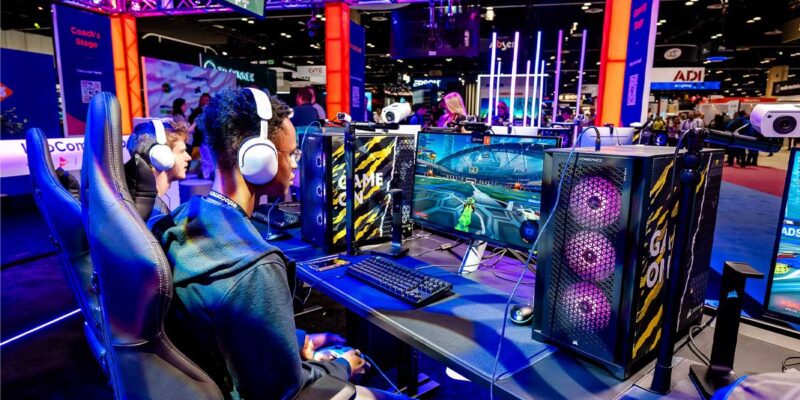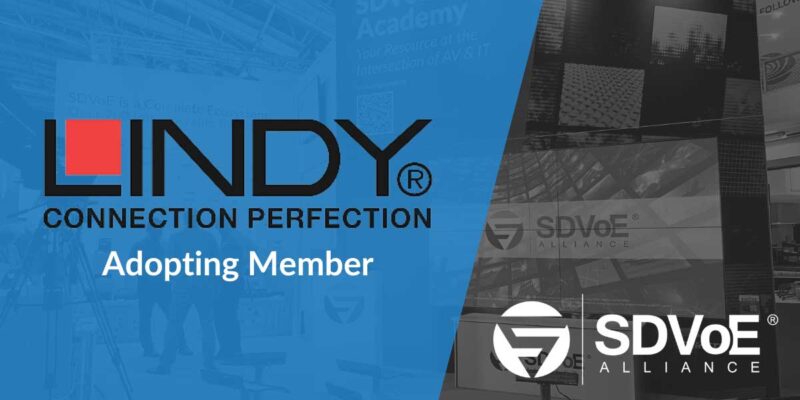ProAV Day of LAVNCH WEEK 2.0: CX, Crystal Balls and a Hot Debate on AV-over-IP
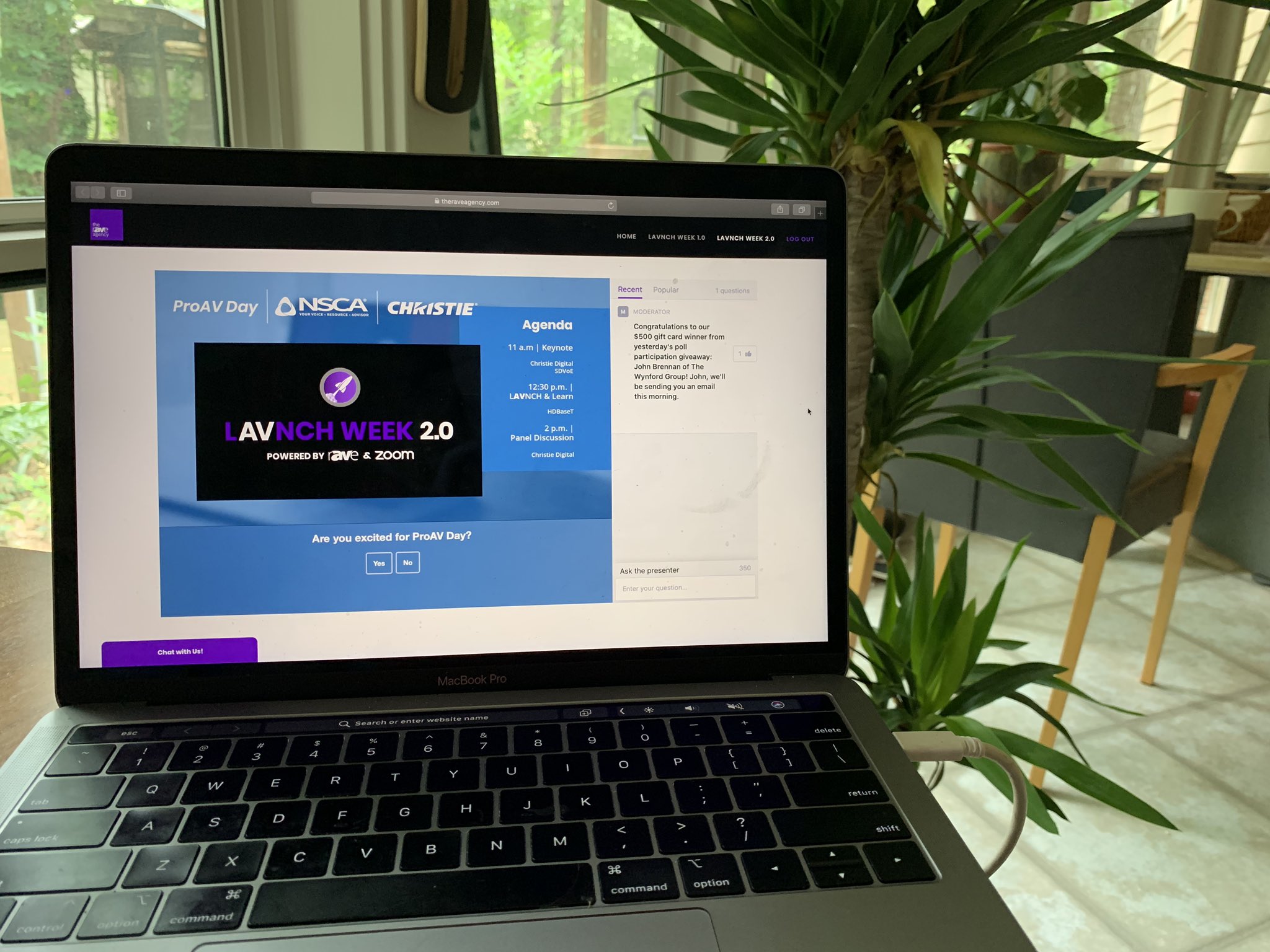
ProAV is at a crossroads today. And it’s not just because so many of us are working from home and don’t know what the commercial/business space will look like in three months, even with well-researched predictions. Big innovations in ProAV were happening long before COVID-19, but the pandemic has expedited — expedited like the first three seconds of Rock ‘n’ Roller Coaster at Disney in Orlando — the changes we’re seeing, and living, now.
Here’s our wrap-up story capturing some of those trends and changes discussed for ProAV Day of LAVNCH WEEK 2.0, held in partnership with the National Systems Contractors Association (NSCA). ProAV Day would not have been possible without Christie, SDVoE and HDBaseT, whose support today enabled us to have these conversations on the LAVNCH WEEK platform. To them, and to all our presenters, we offer a huge thank you for being catalysts of education for our industry.
Keynote: Using Journey Mapping & Design Thinking to Make Customer Experiences Amazing!
Problem-solving starts with putting people at the center — emphasizing, most importantly, empathy. This is called design thinking, and it’s a concept that Laurie Englert explained in her keynote, proving that the process can make the customer experience (CX) not just good but amazing.
To start, Laurie reminded us of our mission as AV integrators, tech managers, designers, consultants, etc.: we need to be the best possible partner to our customers. Two proven, tested methods to do it? Design thinking and journey mapping.
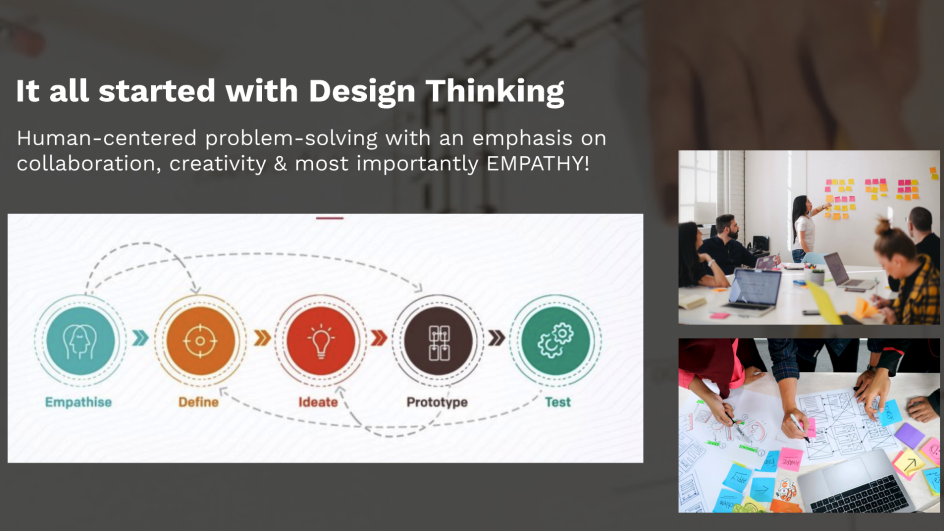
We spoke to Laurie before this keynote to learn a bit more about design thinking and journey mapping. Her helpful explanation: “I consider Design Thinking the innovation framework that continually helps us improve the customer journey. Design Thinking can be used on a variety of different types of projects, from developing a new product to improving a service issue like even making ‘returns’ a positive experience for partners. A journey map is a look from the customer’s lens as they interact with Legrand | AV — from the time they first become a customer to the product research they perform to their after-sale support experience.” Laurie added that, during that journey, the customer has good experiences and bad experiences. When the experience is not so good, it’s a “cliff.” Customer experience teams can dive into those cliffs and find the unmet needs to surprise customers and outperform competitors. How do you do it? Design thinking.
As promised in the interview, this session’s deeper dive was spot-on. What I learned is that design thinking is not a siloed process — it’s collaboration. It’s “fast-fail.” If you think you don’t have time for design thinking, Laurie advises you to think again. Journey mapping and design thinking are a mindset — concepts that, if coddled at the beginning of the project/relationship, could provide bigger, better results (e.g., returns!).
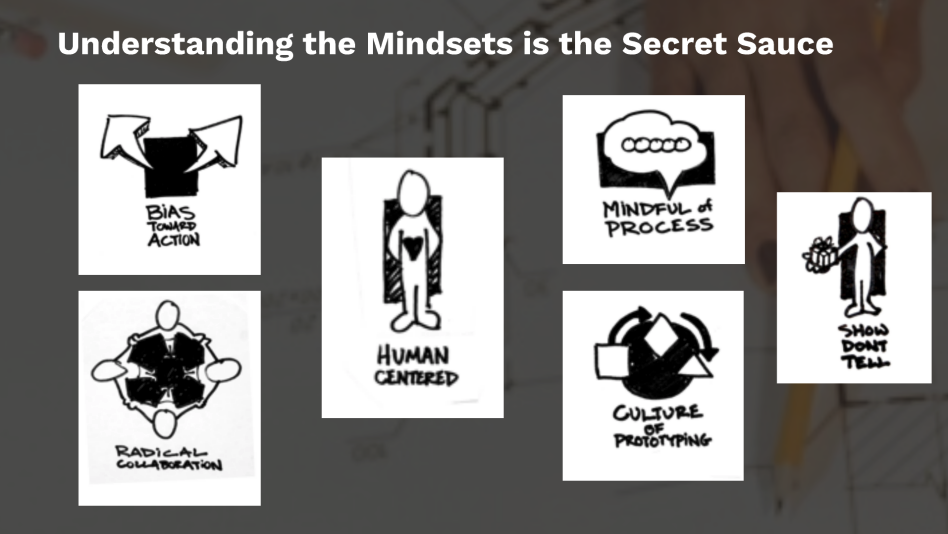
“It’s not like spending hours behind a computer,” Laurie said. It’s prototyping, testing with customers, using real materials. “It’s show, not tell,” she added. Once you get customer feedback in the design-thinking process, then you can start to build out your project plan, Laurie explained. But to be successful with design thinking, it really should be embedded into your organization. It’s not an afterthought.
Are you going to try Design Thinking? We’d love your feedback.
LAVNCH & Learn: Debating the Future of Integration — What Will the Commercial Integration Channel Look Like Tomorrow?
If you’re going to debate the future of AV integration, do it with someone who’s been there, done that. That’s Chuck Wilson, executive director of the NSCA. Chuck led our LAVNCH & LEARN session with rAVe co-founder Gary Kayye; in it, the two pulled out their rhetorical crystal balls and talked AV commercial integration in 2020 and beyond.
Before this session, we spoke to Chuck to get a preview of the topic at hand. It’s two-fold:
- What are integrators concerned with now? Chuck pointed out the reality — that integrators are already dealing with growing concerns like funding from PPP running out, summer/fall employment decisions, employee safety, job sites opening, essential services, cost-savings measures over the summer, etc. According to Chuck, the number-one concern he’s hearing from integrators today is finding creative, new technologies that will help them keep revenue flowing. Cash flow is the number-one concern going into Q3 and Q4 of 2020 … and into 2021.
- What can integrators do tomorrow? Turns out integrators can’t wait until tomorrow. Chuck’s advice is to pay attention to the budgeting — know what’s coming in and going out — as we will essentially have 9 months of revenue against 12 months of expenses (a hit on the P&L) this year. Financial stress-testing (doing a 30/60/90 day cash-flow analysis) is a start, as liquidity, receivables and collections are top of mind. When an integrator calls Chuck Wilson today, he gives a few pieces of advice: an important one is about leadership — leading through a crisis is a first for many leaders/managers. You can be empathetic and listen while also setting an example for your partners and employees.
Chuck’s look at the silver linings:
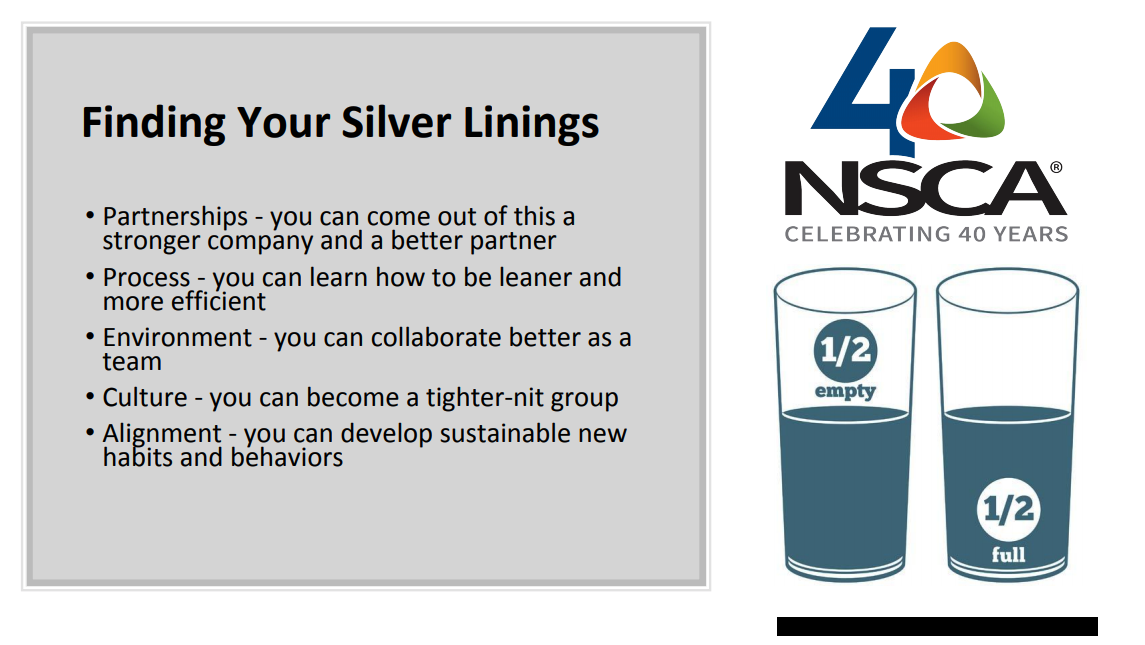
Gary and Chuck continued to discuss the (what seems to be neverending, right?) AV vs. IT debate, particularly in UCC. The two shared similar opinions on a potential new look at AV integrators as “trusted advisors” not just focused on products or projects.

Consider that a bunch of new technologies are already emerging from the security/life safety world and presenting themselves to AV integrators — thermal-detection cameras, spacing technologies, telehealth solutions, AI, facial recognition solutions, etc. Chuck adds that, basically, what we’ve been doing in healthcare can be applied to all workplaces now.
“This is going to be a huge wake-up call,” Chuck said.
As far as the future of the integration channel, look out for a coming-soon series of articles from the NSCA on the future of … you name it. One, for example, will be about the future of the HR department. Another will be about the future of the site visit. Another about the future of telehealth. All the articles will relate to how we’re going to return to work and get revenue flowing again, possibly even break open the bottle of pent-up demand for integrators as service providers, helping end users build their businesses back through the tech solutions we provide.
Panel: The Ultimate AV-over-IP Debate LIVE
Five-ish years into this technology (AV-over-IP) shipping and there’s still no adopted standard. So we wanted to do this panel a little differently: Instead of just talking about the available streaming protocols out there, like AV-over-IP, we wanted to get into it. We invited the major players in signal compression to hop on a call, and we started peeling back the layers. We talked 10G vs. 1G, security, industry-wide adoption, interoperability and A WHOLE LOT more. If you don’t like conflict, don’t watch this panel. Personally, though, I don’t know who wouldn’t have wanted to be a fly on the wall for this. The panel participants were:
- Gabi Shriki, SVP, Head of ProAV Business Unit at Valens, HDBaseT Founding Member
- Justin Kennington, President, SDVoE
- Andrew Starks, Director of Product Management – Macnica Americas, AIMS Alliance Adopter
- Karl Johnson, Director, Terra Product Management, Christie Digital Systems
- Gary Kayye, Co-Founder, THE rAVe Agency
To recap the session in a short write-up would be a disservice to the great, albeit heated, debate that played out. So I’ll direct you to Mark Coxon’s blog post on it instead.
One thing I will say: I’m glad I was buckled.
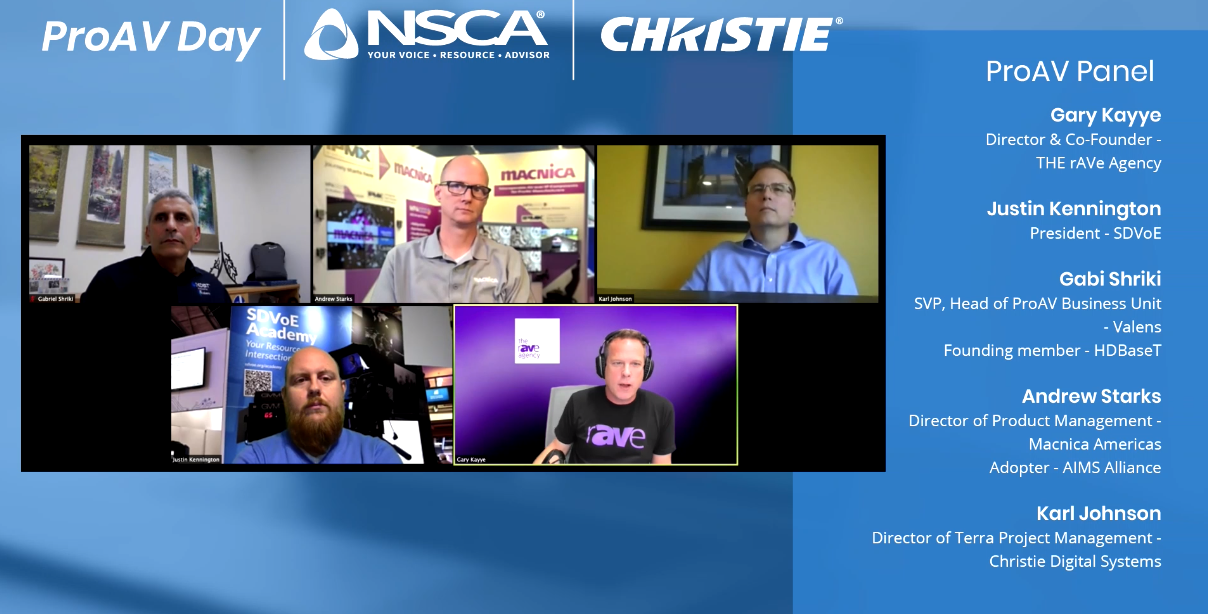
For kicks, I’ll drop in a couple comments that came out of the live panel chat feature (they’re all from anonymous sources who did not name themselves). Some I added for laughs.
“I agree with the argumentation being disappointing. Options are good and the solution that fits one design doesn't necessarily fit another... That's why we have Systems Design Engineers and we aren't just putting the same solution in all spaces/applications…”
“Security is a HUGE driver that most of these solutions overlook. The vast majority of enterprise networks have no effective management for multicast traffic as well.”
“4K 60 at full 4:4:4 quality, + HDR. Great, but HDR is still a moving target: different camps have different definitions of HDR. Whose is right?”
“why can't everyone just get along??? ;)”
“I agree that enough of the 'smaller' players outside of Extron and Crestron will have to adopt a standard for those guys to have incentive to get on board. Right now, they are still using the old playbook of exclusivity until they are forced to change.”
“We miss you Han Solo!”
TL;DR
Too long; didn’t read? Check out all of our LAVNCH WEEK 2.0 coverage — like these summaries and the product videos/feature videos from our supporters — here. Then catch our next LAVNCH WEEK 2.0 story:
New Tech LAVNCH Day: Temperature Checks, Holographic Tech and a Whole Lot of UCC



